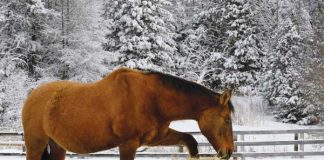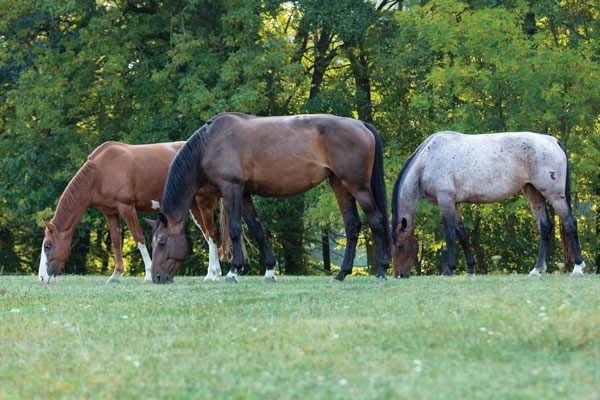
On a rise near the edge of our horse property, we have two adjoining pastures. This is where a couple of our horses graze from morning until night all year long. In the spring, these two pastures are well-groomed with the grass all the same height, but by the time fall rolls around, the horse pastures begin to look a little tired and in need of rehab. Bare spots show up near the gates.
If your horses and pastures are anything like ours, you know that pasture management—and sometimes pasture rehab!—can be a challenging but necessary chore. If you’re overrun with weeds that are too tall and grass that is barely there, here are some ideas to get you started on the road to pasture management.
Understand the Picky Eater
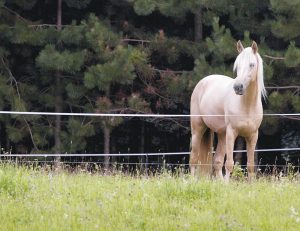
When it comes to pasture management, there is one fact you need to remember: horses are picky eaters! It seems a bit counterintuitive, since horses absolutely love to eat, but if there is a weed or plant that they dislike, they’ll often eat around it.
This happens even more in a pasture setting than it does with hay because there is more room and more grazing options in a pasture. Horses are more likely to selectively graze only on their favorite young, green plants and leave any weeds alone.
Over time (and it doesn’t take long), the grassy areas are weakened, and the patches of weeds—goldenrod, thistle, burdock, native wildflowers, and many others—become more prominent. Luckily, you have options to fix all of this.
1. Rotational Grazing
Rotational grazing isn’t a difficult concept, but it’s not always easy to implement. Here are a few ideas to get you started.
◆ REST THE PASTURE: Horses can’t overgraze a pasture if they’re not in it. This is probably the best way to rehab a pasture—take the horses out, give it several months (or an entire season) to rest and regrow, and tackle the worst of the weeds by mowing or another weed-control method. The problem is that you need another pasture to put the horses in while you tend to the other one, but this is an important step if you’re serious about restoring the troubled field.
◆ DIVIDE THE PASTURE: This may not be the best idea if your pasture is small, but if it’s of adequate size, you might be able to permanently or temporarily split it into smaller sections, allowing you to work on one area while your horses continue to graze on another. If your horses are familiar with electric fencing, this can be a reasonably inexpensive way to cut a pasture in half with comparatively few post holes compared to an entire new field.
◆ MOVE THE PASTURE: This may be impossible with certain types of fencing, but it can work with others. For instance, the electric fencing we use works with a system of gates, posts, and corners that are lightweight and very simple to set up and take down. Once a year, we simply take down all of the electric rope fencing, move the gates and posts, and set the pasture back up in a location nearby. This leaves the old, tired section of pasture open and available for us to mow and restore.
2. Defeat the Weeds
Got the horses out of the pasture? Great—the grass will surely thank you and will take advantage of this time to recover. But there’s another problem to deal with: the weeds.
Every situation is different, but here are a few weed-control possibilities.
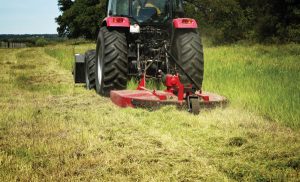
◆ MOW THEM DOWN: This is called mechanical weed control. The idea is that if you repeatedly mow down the weeds, you’ll diminish their impact while allowing the grass to grow back more densely (grass can choke out weeds). Mowing can work very well with annual and biennial weeds, but mowing alone isn’t as effective against perennials. Again, it’s critical to have the horses removed from the pasture before you attempt this in order to prevent horses from eating the grass clippings, which can lead to colic.
◆ USE OTHER ANIMALS: Another way to combat weeds is to share your horse pastures with other grazing/browsing animals. For instance, if you turn goats out on a pasture that has been grazed down by horses, the goats may happily browse on the stemmy, woodier material and some of the weeds that horses won’t touch, like thistle and burdock. Sheep and cattle can also be beneficial in pushing back areas of encroaching weeds.
Not everyone has a farm with multiple species, but if you do, it’s worth researching the possibility of using other animals to help defeat weeds in your horse pastures.
◆ APPLY HERBICIDE: This one is a bit trickier. You’ll find herbicides that are effective against broadleaf weeds while leaving grasses unharmed, or herbicides that are effective on grasses but leave broadleaves unharmed. One problem is that horse-friendly legumes like alfalfa are vulnerable to broadleaf herbicides, so if your pasture contains both grasses and legumes, herbicides of any variety will harm one or the other.
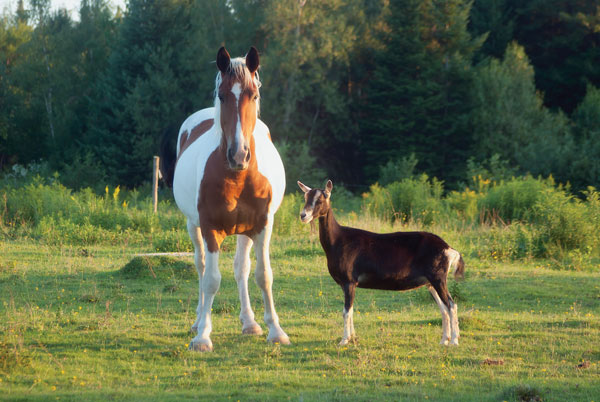
Also, not all herbicides may be designed to be used in an area where grazing animals will return. Proper safety precautions must be taken during application, and the timing of application will depend on the lifecycle of the target weed—some weeds need a spring application, others in the fall.
◆ APPLY FERTILIZER: Fertilizing and lime application can help encourage grass growth and limit weed production.
◆ RE-SEED: In the case of a field that is in poor condition with many bare spots, you may need to consider re-seeding completely. For horse pastures, a no-till seeding is usually a fine plan as disturbing the soil may cause an increase in weeds.
3. Don’t Overgraze
No matter how good your management techniques are, they won’t be sustainable if you overgraze the pasture—that is, if you keep too many horses per acre.Your exact ratio of horses-to-acres will depend on the quality of your grass, and also the size of your equines—not to mention your climate and soil conditions.
A very rough guideline would be 1.5 to 2 acres per horse, assuming a managed pasture, but other horse owners in your area or your county extension office can help give more precise numbers.
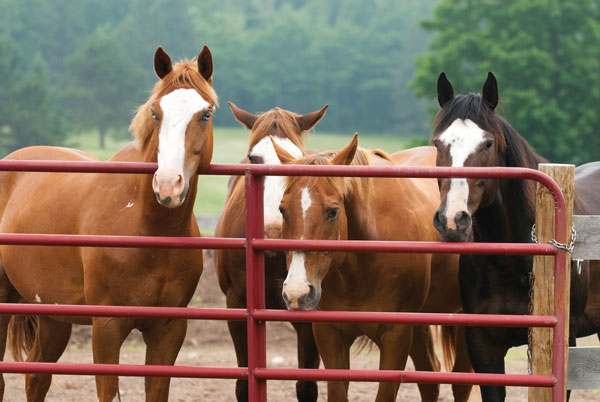
4. Move the Gate—Or Use Two
Horses like to hang out at gates and water troughs. Even when there is plenty of grass to eat elsewhere in the pasture, many horses will migrate to the gate/water area multiple times a day—and they’ll be waiting for you if you bring them indoors for feeding. The result is that the gate areas get worn down more quickly.
One way to defeat this is to install two gates into your pasture and then rotate their use. Alternatively, you could move a single gate. Within a couple of days, your horse will know which gate is currently in use and will begin to spend time there instead, giving the old spot a chance to rest.
It takes some work and planning, but you can manage your pastures and keep your horses happily grazing all season with a little horse pasture rehab.
This article about horse pasture rehab appeared in the April 2020 issue of Horse Illustrated magazine. Click here to subscribe!




